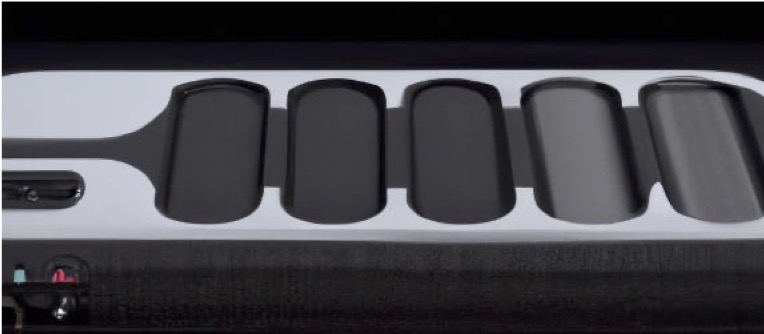The development of a sensitive, accurate, fast, affordable and portable technology platform based on compact cartridge and a simple portable reader device;
Contrary of PCR technology, no need to extract and purify DNA and RNA; Equal or better sensitivity with much shorter time and lower cost;
Contrary of rapid test technology, much higher sensitivity ;
No need of specialized operators or bulky equipment;
Much higher accuracy and simplicity even vs rapid antigen tests;
Applicable to any pathogen or biomarkers (also for not communicable diseases) due to patented technologies based on ECL (Electrochemiluminescence) transduction and molecular recognition.

WHY ECL
Electrochemiluminescence (ECL) is a phenomenon where light is emitted without light excitation. This technique is based on the creation of the excited state upon an electrochemical reaction.
ECL is often used in immunoassays, where a specific antibody is used to capture the analyte of interest. The antibody is labeled with a luminescent molecule that is ECL active. The presence and concentration of the analyte can be determined by measuring the emission signal.
The intensity of the emitted light is proportional to the concentration of the analyte of interest.
ECL has several advantages over other analytical techniques, including high sensitivity, wide dynamic range, and low background noise. It is also relatively easy to use and requires minimal sample preparation.
ECL is compatible with miniaturized electrodes, a low potential (1 V) and with compact, high sensitivity light detectors allowing small, low cost devices.
Bionys Advantages
The infectious agent is recognized with high affinity and selectivity at the electrode surface thanks to patented technologies;
The high sensitivity offered by ECL is further enhanced by patented signal amplification strategies based on the response of hundred/thousands of luminescent molecules, named ECL dyes, for each pathogen;
The signal amplification is realized using nano and bio-technological probes including bacteriophages (phages in short) that are very robust, rod-like biostructures.
Phages are biostructures composed by an envelop containing numerous proteins acting as recognition units towards specific targets.
We are able to engineer phages making them able to specifically recognize the target pathogen (or clinical biomarker) and/or to carry hundreds of ECL-active molecules, (i.e. ECL dyes), for signal amplification.
The combination of all these elements allowed us to reach the sensitivity of PCR methodologies in a much simpler and cost-effective way.
